Book review: “Outlive” by Peter Attia
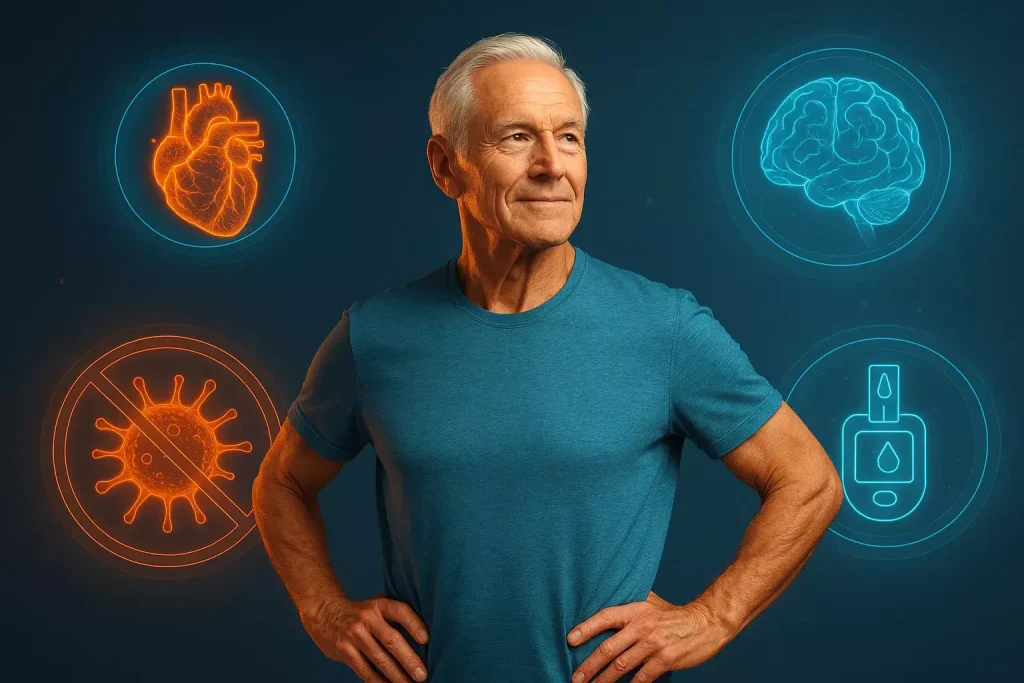
Book review: “Outlive” by Peter Attia Peter Attia, MD, is a Canadian-American physician known for his deep dive into the science of longevity, prevention, and performance optimization. With a background that spans surgical training at Johns Hopkins and research at the National Institutes of Health, Attia has carved out a unique niche in the medical world, situated at the intersection of science, wellness, and biohacking. He is also the host of the popular podcast The Drive, where he regularly interviews leaders in medicine, science, and athletics about how to optimize healthspan. His 2023 book, Outlive: The Science and Art of Longevity, written in collaboration with journalist Bill Gifford, is one of the most talked-about biohacking books in recent years. It quickly rose to bestseller lists, praised for its balance of science, personal narrative, and actionable advice. But Outlive is not a traditional self-help guide. Rather, it serves as a manifesto for rethinking modern healthcare and a roadmap for how to live not just longer, but better. Join our Online Workshops: The four horsemen and the promise of proactive medicine Central to Outlive is Attia’s framework of the “four horsemen”: heart disease, cancer, neurodegenerative diseases (like Alzheimer’s), and type 2 diabetes. These are the main killers in the modern world, but Attia argues they are often treated too late, when little can be done beyond symptom management. The traditional medical system, which he refers to as “Medicine 2.0,” is reactive by design: it waits for illness before intervening. In contrast, Outlive presents “Medicine 3.0,” a proactive, prevention-first approach that integrates the latest in data science, diagnostics, and personalized interventions. Attia doesn’t reject conventional medicine but repositions it within a larger vision, one where longevity is not measured solely in years, but in mobility, cognitive clarity, and independence. For readers new to biohacking, this chapter provides a clear orientation. It explains the dangers of metabolic dysfunction, poor diagnostics, and delayed care, while proposing solutions: early screening, risk stratification, and targeted lifestyle changes. Movement as medicine: a new blueprint for fitness If there’s a single through-line in Outlive, it’s that exercise is the most potent tool we have to delay aging. But Attia isn’t promoting the usual advice to “move more.” Instead, he breaks down physical performance into components: VO₂ max, strength, stability, muscle mass and builds a long-term strategy around them. One of his most popular concepts is the “Centenarian Decathlon”, a series of functional goals that a person wants to achieve even in their 90s or 100s, like carrying groceries or getting off the floor without assistance. Attia insists that fitness is the ultimate predictor of both lifespan and healthspan. His exercise recommendations are specific: train zone 2 cardio for mitochondrial health, zone 5 intervals for peak performance, resistance training for muscle retention, and stability work to prevent falls later in life. This isn’t just motivational talk, clinical studies, data points, and real-world examples back it. But it’s also personal. Throughout the book, Attia references his own evolving fitness journey, including mistakes, injuries, and mindset shifts. That vulnerability makes the science feel more accessible, even when it’s technical. Food, sleep, and the emotional body Nutrition is another major theme in Outlive, but Attia avoids the usual diet wars. Instead of prescribing keto, paleo, or plant-based regimens, he urges readers to understand their own metabolic response. The book focuses heavily on insulin resistance as a root cause of chronic disease and encourages monitoring glucose levels, eating adequate protein, and eliminating ultra-processed foods. What stands out in this section is nuance. Attia acknowledges that dietary needs shift across a lifetime, especially with age-related changes in muscle synthesis and hormone regulation. The same applies to fasting, supplementation, and macronutrient ratios; they may help or harm, depending on context. Sleep is described as “neuroprotective medicine.” Drawing on neuroscience and case studies, Attia emphasizes quality over quantity and outlines routines for optimizing circadian rhythms. He treats sleep not as a lifestyle add-on but as foundational infrastructure for both body and mind. Perhaps the most surprising section is on emotional health. Attia candidly discusses his own struggles with perfectionism, anxiety, and unresolved trauma, positioning emotional fitness as just as important as physical conditioning. This isn’t common in books focused on biohacking, which often ignore the mental dimension. But Outlive insists: longevity without emotional regulation is an empty promise. Risk, reward, and the limits of intervention Although Outlive celebrates data and diagnostics, Attia is cautious about medical intervention. He discusses the experimental use of drugs like rapamycin and metformin, not as recommendations, but as case studies in calculated risk. He emphasizes that while some pharmaceutical interventions may show promise in delaying aging at the cellular level, they also carry significant unknowns, especially when applied to healthy individuals. This is where Attia’s personal style as both a scientist and a skeptic shines through. He acknowledges the appeal of cutting-edge treatments, but he reminds readers that the foundations, exercise, sleep, emotional regulation, and nutrition are far more impactful than the latest longevity pill. The book also critiques the healthcare industry’s one-size-fits-all mentality. Instead of relying on population averages, Attia champions personalized metrics. For example, rather than waiting for a fasting glucose test to reveal pre-diabetes, readers are encouraged to use continuous glucose monitors (CGMs) to catch early metabolic warning signs. Critics of the book have pointed out that some of these recommendations are accessible only to those with significant resources, CGMs, full-body MRIs, custom lab panels. Attia acknowledges this but argues that many strategies, such as strength training or fasting, cost nothing and offer enormous returns. Still, Outlive is unapologetically geared toward readers who are ready to take full ownership of their health. A must-read for every biohacker Among today’s growing library of biohacking books, Outlive by Peter Attia stands out as both practical and profound. It’s a deeply researched, emotionally honest, and unapologetically detailed guide to healthspan optimization. It doesn’t offer shortcuts or miracle cures. Instead, it offers a structured, science-based philosophy for living longer and better if
Book review: “Biohack like a woman” by Aggie Lal

Book review: “Biohack like a woman” by Aggie Lal In a market saturated with biohacking guides mostly written by and for men, Aggie Lal’s Biohack Like a Woman breaks through as a refreshing, empowering, and highly practical manual tailored specifically to women’s unique biology. This is not just a lifestyle book or a wellness manifesto; it is a full-bodied guide to optimizing health, energy, and self-awareness by syncing with one’s hormonal rhythms, nutritional needs, and emotional intelligence. Aggie Lal, well-known as a travel influencer, wellness educator, and podcast host of Biohacking Bestie, brings both scientific insights and real-life experimentation to the table. With a background in physiology and a deep passion for self-optimization, Lal combines personal experience with expert-backed data to deliver a book that is as readable as it is transformative. What sets Biohack Like a Woman apart is its unapologetic focus on the female experience, from cycle-syncing and intermittent fasting to the emotional toll of burnout and self-neglect. The book has received praise from wellness communities and critics alike for its no-nonsense tone, beautiful design, and commitment to practical change. But is it all hype, or is this a true must-read for women in the wellness world? Let’s unpack the book chapter by chapter. Join our Online Workshops: Redefining biohacking: Beyond silicon valley and cold showers Biohacking, as it’s commonly understood, conjures up images of cryotherapy tanks, keto obsession, and testosterone-boosting supplements. Lal starts by dismantling this male-dominated narrative and reframing biohacking as something inherently accessible and cyclical when done through a feminine lens. She introduces readers to a softer, more intuitive version of biohacking, one that doesn’t rely on brute-force willpower but instead leans into the wisdom of the body. This means understanding menstrual cycles, emotional flux, sleep sensitivity, and stress reactivity, all things historically overlooked in mainstream wellness discourse. The hormonal advantage: Learning to ride your cycle, not fight it One of the book’s strongest sections dives deep into the four phases of the menstrual cycle: menstruation, follicular, ovulation, and luteal. Lal unpacks how each phase affects energy levels, brain chemistry, metabolism, and even social behavior. She doesn’t just explain the science, she shows how to act on it. There are tailored biohacks for each phase, from nutrition tweaks and workout styles to mental focus and libido awareness. The message is empowering: your body isn’t a battleground, it’s a calendar, a compass, and a tool for performance optimization. This section alone has been widely applauded in other reviews for its clarity and practicality. For many readers, it’s the “aha” moment that shifts their entire relationship with their body. Food as fuel: The female approach to nutrition and fasting While intermittent fasting has become a go-to hack for weight loss and longevity, Lal warns that many fasting protocols ignore women’s hormonal needs. She introduces the concept of “cycle-syncing fasting,” advocating gentler, phase-aware fasts that support rather than sabotage health. This chapter dives into gut health, micronutrient density, and the myth of calorie obsession. Lal presents a curated biohacker’s pantry, adaptogens, nootropics, and metabolic regulators, along with meal-planning strategies that actually work for busy lives. Her anti-diet message is clear: food should be joyful, nourishing, and powerful. Biohacking isn’t about deprivation, it’s about strategic nourishment. Mental clarity and emotional mastery: The inner game of biohacking Unlike many biohacking books that prioritize tech gadgets over emotional well-being, Biohack Like a Woman devotes significant attention to mood regulation, trauma healing, and mental clarity. Lal explores how chronic stress affects female physiology differently than male physiology, especially in the realm of cortisol spikes, sleep disruption, and burnout. She provides tools like HRV tracking, breathwork, and “emotional detox” journaling. There’s even a whole section on how to biohack your inner critic, which readers have described as “life-changing” in online forums. This is where the book bridges wellness and psychology in a powerful, highly personal way. Movement with meaning: Exercise that loves you back Instead of promoting punishing workouts or high-testosterone gym routines, Lal emphasizes movement that supports hormonal harmony. This includes slower strength training during the luteal phase, HIIT in the follicular phase, and restorative yoga around menstruation. She also discusses fascia, lymphatic drainage, and mobility, the often-ignored “soft tissues” of fitness. The book offers a sample 28-day movement plan aligned with the menstrual cycle that many readers have said helped them overcome long-term workout fatigue. In this chapter, biohacking becomes something sustainable, less about pushing harder, and more about moving smarter. Sleep like a goddess: The feminine science of rest and recovery Sleep is where real healing happens, and Lal treats it with the reverence it deserves. She discusses how progesterone, estrogen, and melatonin interact and fluctuate across the cycle, and how they impact REM, deep sleep, and circadian rhythms. There are targeted sleep hacks here, from magnesium supplementation and wearable sleep trackers to red light therapy and bedtime rituals. But what stands out is Lal’s emphasis on emotional rest, permission to do nothing, to unplug, to say “no.” This section is particularly resonant in today’s hustle culture, where women are often expected to be everything to everyone. Biohack Like a Woman gives sleep its throne back. The biohacking toolbox: Tech, supplements, and rituals In a neat but not overwhelming way, Lal covers the biohacking gadgets and tools she actually uses, and why. This includes glucose monitors, Oura Rings, blue light blockers, and adaptogenic supplements. She keeps it honest: you don’t need a $3,000 setup to start biohacking. Her philosophy is “minimum input, maximum return,” which makes the book accessible to readers new to wellness tech. Each recommendation is paired with a cost, benefit, and cautionary note, rare transparency in an often overhyped field. Who this book is (and isn’t) for Lal’s approach is unapologetically tailored to women, especially those in their reproductive years. If you menstruate, experience PMS, or feel that your energy fluctuates mysteriously throughout the month, this book is for you. It’s also ideal for those who’ve tried generic health programs and felt worse, not better. Whether
Beginner’s guide to biohacking: Start your journey to optimal health

Beginner’s guide to biohacking: Start your journey to optimal health Today, health concerns are increasingly prevalent. Many individuals are seeking innovative approaches to optimize their wellbeing. Enter biohacking – a revolutionary concept that empowers you to take control of your biology through strategic lifestyle modifications. But what exactly is biohacking, and how can beginners navigate this fascinating yet complex field? Join our Online Workshops: What is biohacking? Biohacking, at its core, is the art and science of making incremental changes to your body, diet, and lifestyle to improve your health and enhance your performance. As Dave Asprey, a prominent figure in the biohacking community, defines it: “Biohacking is the art and science of changing the environment around you and inside you so you have full control of your biology.” Unlike traditional healthcare approaches that often treat symptoms after they appear, biohacking focuses on proactive optimization and prevention. The popularity of biohacking has surged in recent years, with a growing community of health enthusiasts, scientists, and everyday individuals exploring ways to “hack” their biology for better health outcomes. According to recent trends, Google searches for biohacking-related terms have increased by over 200% since 2019, indicating a significant rise in public interest. This growing fascination isn’t surprising, considering the potential benefits biohacking offers – from enhanced cognitive function and increased energy levels to improved sleep quality and extended longevity. For complete beginners, the world of biohacking might seem overwhelming at first glance. With numerous techniques, tools, and terminologies to navigate, it’s easy to feel lost in this vast landscape of biological optimization. That’s precisely why this comprehensive guide exists – to demystify biohacking and provide you with a clear, actionable roadmap to start your journey toward optimal health. As you embark on this biohacking adventure, it’s essential to set realistic expectations. While biohacking can lead to remarkable improvements in your health and wellbeing, it’s not a magical solution that delivers overnight results. The most successful biohackers understand that meaningful changes require consistency, patience, and a willingness to experiment with different approaches to find what works best for their unique biology. Remember, the most powerful biohacks are often the simplest ones – small, sustainable changes that compound over time to create significant improvements in your health and quality of life. Understanding biohacking fundamentals At its scientific core, biohacking operates on a simple principle: your body is a complex biological system that responds to various inputs and stimuli. By strategically modifying these inputs—whether they’re nutritional, environmental, or lifestyle-based—you can influence your biological outputs and optimize your health outcomes. This systems-based approach views the human body not as a collection of isolated parts but as an interconnected network where small changes can create ripple effects throughout your entire physiology. The science behind biohacking draws from multiple disciplines, including molecular biology, nutrition science, chronobiology, and neuroscience. For instance, research in epigenetics—the study of how behaviors and environment can influence how your genes work—has shown that lifestyle factors can actually turn genes on or off, affecting everything from your metabolism to your cognitive function. A 2021 study published in the Journal of Personalized Medicine found that targeted lifestyle interventions could positively alter gene expression patterns associated with inflammation and cellular aging, demonstrating the biological basis for many biohacking practices. When exploring the biohacking landscape, it’s helpful to understand the different approaches that exist within this broad field. Nutrigenomics Nutrigenomics focuses on how food interacts with your genes and affects your health. This branch of biohacking examines how specific nutrients can influence gene expression and, consequently, your overall health. Practitioners of nutrigenomics often use genetic testing to identify their unique nutritional needs and tailor their diets accordingly. For example, someone with a genetic predisposition to inflammation might adopt an anti-inflammatory diet rich in omega-3 fatty acids and antioxidants to mitigate their genetic risk factors. DIY Biology DIY Biology represents a more experimental approach to biohacking, where individuals conduct self-experiments to optimize their health and performance. These biohackers often track various biomarkers—such as blood glucose levels, heart rate variability, or sleep quality—to gather data about their bodies and make informed adjustments to their lifestyles. While this approach encourages personal experimentation, it’s important for beginners to start with safe, well-established practices before venturing into more experimental territory. Grinder Grinder is the most extreme form of biohacking, involving technological implants or modifications to the human body. This approach is less common and generally not recommended for beginners due to potential risks and ethical considerations. Examples include implanting microchips under the skin or using RFID tags for various purposes. For most people starting their biohacking journey, focusing on non-invasive approaches is both safer and more accessible. Misconceptions about biohacking Despite its growing popularity, biohacking is surrounded by several misconceptions that can confuse beginners. One common myth is that biohacking requires expensive equipment or advanced scientific knowledge. In reality, many effective biohacks are simple, affordable, and accessible to anyone. Another misconception is that biohacking is about finding shortcuts or “cheating” biology. True biohacking is about working with your biology, not against it, to optimize your health through evidence-informed approaches. For beginners, ethical considerations and safety concerns should be paramount when exploring biohacking. While many biohacking practices are safe and beneficial, others may carry risks, especially when taken to extremes. It’s essential to approach biohacking with a critical mind, research thoroughly before trying new techniques, and consult healthcare professionals when necessary. Remember that what works for one person may not work for another, as individual biology varies significantly. Start with well-established, low-risk practices and gradually expand your biohacking repertoire as you gain experience and knowledge. Why should you consider biohacking? The potential benefits of biohacking extend across multiple dimensions of health and wellbeing, making it an attractive approach for those seeking to optimize their physical and mental performance. When implemented thoughtfully, biohacking strategies can lead to significant improvements in energy levels, cognitive function, physical performance, emotional wellbeing, and even longevity. One of the most compelling reasons to consider biohacking is its potential to
Everyday biohacks: Practical tweaks for a healthier, happier life
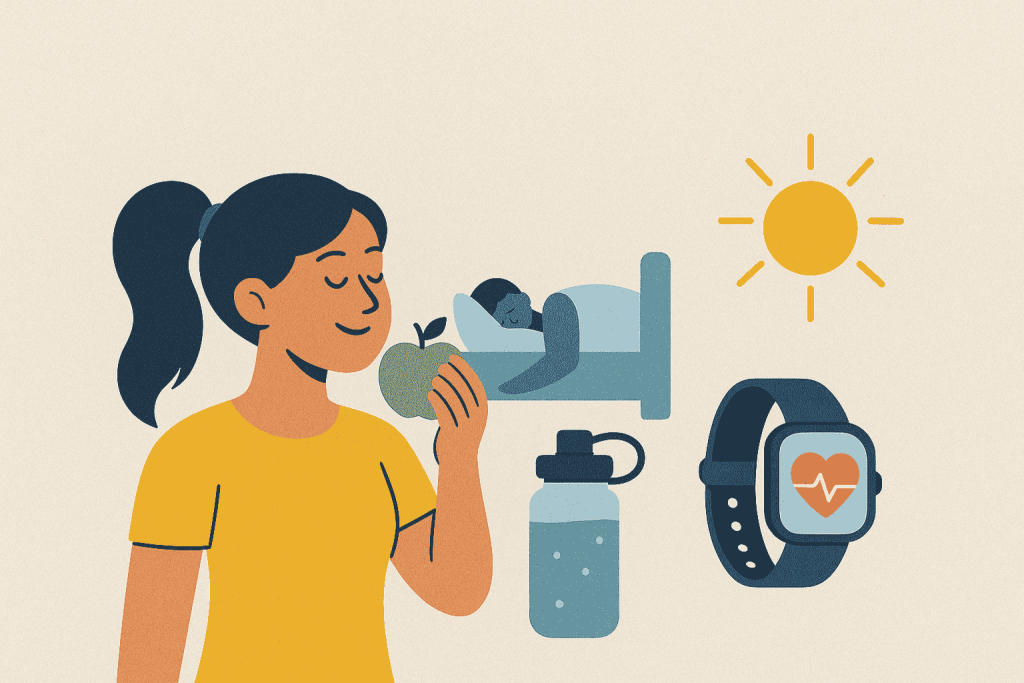
Everyday biohacks: Practical tweaks for a healthier, happier life Ever heard of biohacking and wondered if it’s something complicated or reserved for tech enthusiasts? Great news—biohacking is actually quite simple, practical, and accessible to everyone, even if you’re a complete beginner. In short, biohacks are everyday tweaks designed to enhance your health, productivity, and happiness without drastic changes. Let’s dive in! Join our Online Workshops: Understanding biohacking: basics for beginners Biohacking is the practice of making small adjustments to your lifestyle to improve physical and mental performance. Think of your body and mind as systems that can be optimized through daily habits. Contrary to popular belief, biohacking doesn’t require expensive gear or advanced scientific knowledge—anyone can do it safely from home. Common misconceptions Myth: Biohacking is risky. Truth: Simple biohacks are generally safe and beneficial. Myth: You need special equipment. Truth: Most effective biohacks require no special tools—just awareness and consistency. Simple nutritional biohacks for daily life Nutrition is foundational in biohacking. Eating right can significantly enhance your overall well-being and energy levels. Hydration hacks Drinking water might sound too basic, but nearly 75% of people are chronically dehydrated. Aim to drink a glass of water right after waking up and before each meal. This simple habit boosts metabolism and mental clarity. Meal timing and intermittent fasting Intermittent fasting is an easy nutritional biohack where you cycle between eating and fasting. Beginners can start with a 12-hour eating window (e.g., 8 AM to 8 PM). Benefits include better digestion, weight management, and increased mental sharpness. Nutrient-dense food suggestions Incorporate simple, nutrient-packed foods daily: Avocados (healthy fats) Leafy greens (vitamins and minerals) Berries (antioxidants) Sleep biohacks: Improve your sleep effortlessly Good sleep dramatically improves mood, productivity, and overall health. Nearly 35% of adults don’t get enough quality sleep regularly. Optimizing sleep environment Simple tweaks: Darken your room completely. Maintain room temperature between 60–67°F (15–19°C). Use white noise or calming sounds. Reducing blue light Blue light exposure before bedtime disrupts your melatonin production. Biohack your sleep by reducing screen time 1-2 hours before bedtime or wearing blue-light-blocking glasses. Productivity biohacks: Simple tips to get more done Boosting productivity doesn’t require drastic changes, just smarter habits. Pomodoro technique Break tasks into 25-minute segments, followed by a 5-minute break. This enhances focus, reduces burnout, and improves efficiency. Effective morning routines Start with: Hydrating immediately upon waking Short stretching exercises Writing down three priorities for the day Mental health biohacks: Everyday practices for better mood Mental health biohacking includes simple yet impactful techniques. Mindfulness Just five minutes of daily mindfulness or meditation significantly reduces stress and anxiety. Try apps like Headspace or Calm for guided meditation. Gratitude journaling Spend a few minutes each evening writing three things you’re grateful for. Studies show regular gratitude practices improve mental health and boost happiness. Mood and exercise Short bursts of exercise (10-15 minutes daily) increase dopamine and serotonin levels, effectively biohacking your mood. Fitness biohacks: Making exercise effortless and effective Fitness biohacks aren’t about becoming a gym fanatic overnight—they’re about practical, manageable routines. Quick home workouts HIIT (High-Intensity Interval Training) workouts of just 15 minutes can effectively burn calories and build endurance. Use YouTube channels for guidance like Fitness Blender or Joe Wicks. Active lifestyle adjustments Biohack your fitness by incorporating more movement daily: Walking meetings Standing desks Taking short stretch breaks Environmental biohacks: Optimizing your home and workspace Your environment greatly influences your well-being and productivity. Air quality improvements Introduce houseplants (like snake plants or peace lilies) that naturally purify indoor air, reducing toxins and improving respiratory health. Decluttering Reducing clutter has proven psychological benefits, including better concentration and reduced stress. Set aside 15 minutes daily to tidy your workspace. Lighting Use daylight bulbs to replicate natural sunlight indoors, enhancing your mood, productivity, and circadian rhythm. Tracking your biohacking journey: Easy methods to measure progress Tracking your biohacking progress ensures motivation and success. Journaling Document your habits and feelings daily to observe patterns and progress. A simple notebook or digital apps like Daylio work perfectly. Apps and wearables Tools like Fitbit or Apple Watch track your sleep, activity, and even stress levels, providing data-driven insights into your progress. Common biohacking mistakes beginners should avoid Avoid complexity The biggest mistake beginners make is trying too many hacks at once. Start small, focus on one biohack at a time, and gradually integrate new practices. Maintain consistency Biohacking thrives on consistency. Small daily actions outperform drastic, infrequent efforts. Getting started today: Your easy biohacking action plan Here’s your quick-start action plan: Week 1: Hydrate immediately upon waking. Week 2: Introduce intermittent fasting (12-hour window). Week 3: Begin a five-minute daily mindfulness routine. Week 4: Incorporate a daily 15-minute home workout. Regularly remind yourself that small tweaks consistently applied yield impressive long-term results. Biohacking is for everyone Biohacking doesn’t have to be complex or intimidating. By implementing simple everyday biohacks—like improving hydration, sleep hygiene, meal timing, and adding mindful practices—you can dramatically boost your health and happiness. Start today, track your progress, and watch these practical tweaks transform your life into something healthier, happier, and effortlessly optimized. Subscribe to the FOREVEROLIMUS Newsletter Sign up to join 500,000+ other subscribers and receive regular emails on neuroscience, health and science-related topics.
Mindfulness and Meditation: Tools for Successful Biohacking Your Weight Loss

Mindfulness and meditation: Tools for successful biohacking your weight loss In recent years, biohacking has emerged as a powerful trend among health enthusiasts and individuals looking to optimize their well-being. Simply put, biohacking involves making incremental changes to lifestyle, diet, and mental practices to enhance your body’s performance and achieve better health outcomes. Among the numerous biohacking methods, mindfulness and meditation stand out as particularly effective tools for sustainable weight loss. This article explores how mindfulness and meditation can help you biohack your weight loss journey effectively and sustainably. Join our Online Workshops: What is biohacking, and why is it important for weight loss? Biohacking refers to the practice of tweaking your biology through lifestyle and environmental changes to enhance physical and mental performance. Popularized by wellness influencers and scientists alike, biohacking techniques include nutrition optimization, physical training, supplements, and mental wellness practices such as mindfulness and meditation. When applied to weight loss, biohacking can deliver substantial and lasting results. The key lies in its holistic approach, addressing not only dietary and physical activities but also mental and emotional health. Incorporating mindfulness and meditation into your biohacking routine targets stress management, emotional eating, and awareness of eating behaviors—all critical factors in successful weight management. Understanding mindfulness: How does it help with weight loss? Mindfulness involves paying deliberate attention to the present moment without judgment. When applied to eating habits, mindfulness can significantly transform your relationship with food. By focusing fully on the sensory experiences of eating—such as taste, texture, and satisfaction—you naturally become more attuned to hunger and fullness signals. Scientific studies support the effectiveness of mindfulness in weight management. A study published in the Journal of Obesity found that participants who practiced mindful eating reduced binge eating episodes and achieved greater long-term weight loss compared to traditional dieting. Another study indicated mindfulness helps regulate cortisol levels (the stress hormone), reducing stress-induced overeating. Practical mindfulness techniques beginners can adopt include: Eating slowly and savoring each bite. Checking hunger cues before and during meals. Reducing distractions, such as TV or phones, while eating. Meditation basics: Biohack your brain for better weight loss Meditation is another powerful biohacking tool that complements mindfulness. It involves training your attention to achieve mental clarity and emotional stability. When regularly practiced, meditation positively influences brain chemistry, particularly regions associated with emotional regulation and appetite control. For beginners, guided meditations or breath-awareness exercises are excellent starting points. These practices encourage deep relaxation and help manage stress—two essential components in preventing emotional eating and food cravings. A consistent meditation practice has been linked to reduced anxiety, improved mood, and better sleep—all crucial elements that support weight management goals. Research shows meditation can effectively reduce cravings by activating regions in the brain responsible for self-control. Regular practitioners often report a decreased desire for unhealthy foods and better resilience against emotional triggers. Combining mindfulness and meditation for optimal results While mindfulness and meditation individually offer significant benefits, combining them creates a powerful synergy for biohacking your weight loss. Developing a daily routine incorporating both practices fosters a balanced and sustainable lifestyle. Creating a mindfulness and meditation routine might involve: Morning meditation to set positive intentions. Mindful eating exercises during meals. Evening relaxation meditations to reflect and decompress. Beginners may face challenges such as impatience, distraction, or doubt about effectiveness. Setting realistic expectations, starting with short sessions (5-10 minutes daily), and gradually increasing duration helps establish long-term habits. Practical tips: Integrating mindfulness and meditation into your life Implementing mindfulness and meditation into your everyday routine can seem daunting initially. Here’s a simple, step-by-step approach to help you get started: Start small: Commit to just 5 minutes of meditation daily, gradually extending sessions as comfort increases. Consistency is key: Practice at the same time each day to form strong habits. Use technology: Leverage mindfulness apps like Calm, Headspace, or Insight Timer to guide your practice. Mindful eating: Choose one meal daily to practice mindful eating intentionally. Track your progress: Maintain a journal to note changes in your mood, cravings, and overall well-being. Apps and digital tools have revolutionized mindfulness and meditation practice, making it accessible even to beginners. Research conducted by digital wellness platforms highlights that regular users of mindfulness apps report decreased anxiety, better sleep quality, and significant improvements in their eating habits. Meditation and mindfulness are essential for holistic approach Mindfulness and meditation are powerful biohacking tools offering a holistic approach to weight loss. Through mindful eating, stress reduction, emotional control, and improved self-awareness, these practices promote sustainable and effective weight management. Remember, successful biohacking involves patience and consistency. Begin slowly, incorporate mindfulness and meditation into your daily routine gradually, and enjoy the sustainable, transformative benefits. For more insights, tips, and biohacking strategies, explore our other articles, subscribe to our newsletter, and stay informed about optimizing your health journey. Subscribe to the FOREVEROLIMUS Newsletter Sign up to join 500,000+ other subscribers and receive regular emails on neuroscience, health and science-related topics.
The role of gut health in biohacking weight loss
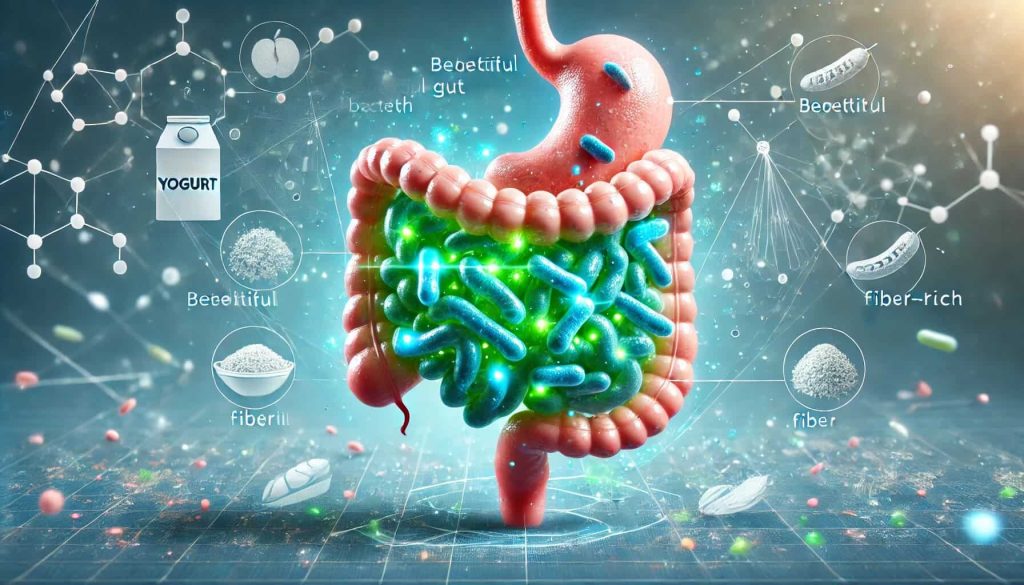
The role of gut health in biohacking weight loss Gut health is a cornerstone of overall well-being, significantly influencing not only digestion but also your body’s metabolism, immune function, and even mood. Recently, biohackers—individuals dedicated to enhancing human health through targeted lifestyle changes—have discovered that optimizing gut health may also be pivotal for weight loss. But how exactly does this work? This comprehensive guide dives into the fascinating link between gut health and biohacking weight loss. Join our Online Workshops: Understanding gut health What is Gut Microbiota? The gut microbiota refers to the trillions of microorganisms, including bacteria, viruses, and fungi, inhabiting the human gastrointestinal tract. These microorganisms, collectively known as the gut microbiome, play a critical role in digesting food, synthesizing essential nutrients, and maintaining gut barrier integrity. Gut Flora Explained: Types of Bacteria in Your Gut Beneficial gut bacteria, often called probiotics, include Lactobacillus and Bifidobacterium. These bacteria promote healthy digestion and nutrient absorption. Conversely, harmful or imbalanced gut bacteria can trigger inflammation and various gastrointestinal diseases, contributing to obesity and other chronic conditions. How Gut Microbiome Influences Overall Health The gut microbiome influences not only digestion but also your immune response, brain health, and metabolism. Emerging research highlights the gut-brain axis, showing how gut health directly impacts mental health and overall well-being. Signs and Symptoms of an Unhealthy Gut Common signs include bloating, constipation, diarrhea, abdominal pain, fatigue, mood swings, and unexplained weight changes. Chronic symptoms may also indicate dysbiosis—an imbalance of gut microbiota—leading to systemic inflammation and health complications. Gut health and obesity The Role of Gut Bacteria in Obesity Certain gut bacteria can significantly impact your body weight. Scientific studies have identified distinct microbial patterns in obese individuals compared to those with healthy weights. Research from the National Institutes of Health shows that the gut microbiota from twins discordant for obesity can modulate weight when transplanted into mice, highlighting a direct microbial influence on obesity. How Changes in Gut Microbiota Composition Promote Weight Gain Processed foods, high in sugars and unhealthy fats, encourage harmful gut bacteria growth, promoting weight gain. Conversely, diets rich in dietary fiber, prebiotics, and probiotics enhance beneficial bacteria, assisting in weight management. Scientific Evidence: Gut Microbiota Alters Metabolism According to research published by the National Institutes of Health, beneficial gut bacteria can improve insulin sensitivity, reducing obesity risks by enhancing metabolism efficiency. This relationship highlights gut health as a critical factor in the pathophysiology of obesity. Dietary strategies to improve gut health for weight loss The Impact of Processed Foods on Gut Health Processed foods negatively affect gut health, leading to dysbiosis. Eliminating or reducing these foods and replacing them with whole, nutrient-dense alternatives supports a healthy gut microbiome. Fermented Foods: Natural Probiotics for Weight Loss Foods like yogurt, kefir, kimchi, and sauerkraut naturally contain probiotics, enhancing beneficial gut flora. Regular consumption promotes weight loss, digestion, and overall gut health. Importance of Dietary Fiber Dietary fiber acts as food for gut microbes, promoting the growth of beneficial bacteria. Studies indicate high-fiber diets lead to a diverse gut microbial environment, linked to decreased weight gain and obesity risk. Probiotics for Maintaining a Healthy Gut Probiotic supplements may help correct gut dysbiosis. Specific probiotic strains have been scientifically proven to reduce inflammation and support weight loss when combined with balanced nutrition and regular physical activity. Dietary strategies to biohack your gut health for weight loss Increase fiber intake: Include more vegetables, fruits, legumes, and whole grains. Introduce prebiotics: Foods like onions, garlic, and bananas nourish beneficial gut bacteria. Stay hydrated: Adequate water intake enhances digestion and gut function. Lifestyle factors influencing gut health Exercise and Gut Health Regular physical activity boosts beneficial gut microbes and enhances gut microbial diversity, essential for sustainable weight loss. Stress and the Gut Microbiome Chronic stress negatively impacts gut health, causing dysbiosis and weight gain. Mindfulness practices, meditation, and adequate sleep help manage stress and promote gut health. Sleep’s Role in Gut Health Sleep deprivation alters the gut microbiome composition, encouraging obesity. Adequate sleep supports a healthy gut environment, essential for weight management. Gut health and chronic health conditions Insulin Resistance and Gut Health Studies link gut microbiota imbalance to insulin resistance and type 2 diabetes. Improving gut microbiome diversity can aid in managing insulin sensitivity and metabolic health. Autoimmune Diseases Emerging research connects gut health with autoimmune diseases like Crohn’s disease, ulcerative colitis, and celiac disease, emphasizing the importance of maintaining gut microbiome balance to manage autoimmune responses. Debunking common myths Gut Bacteria Alone Can Solve Obesity Although gut health significantly affects weight management, a holistic approach—including nutrition, exercise, sleep, and stress management—is essential for sustained weight loss. Misconceptions About Probiotics Probiotics are beneficial, but not all probiotics have the same effects. Choosing strains specifically linked to weight loss and gut health outcomes is crucial. Practical tips to biohack your gut for weight loss Incorporate fermented and fiber-rich foods into your diet. Limit consumption of sugars and processed foods. Engage in regular physical activity. Manage stress through mindfulness or meditation. Prioritize restful sleep to maintain gut microbial diversity. Healthy gut, healthy weight Gut health plays an essential role in biohacking your way to weight loss. Understanding and nurturing your gut microbiome through diet, lifestyle modifications, and targeted supplementation can lead to significant and sustainable improvements in your body weight and overall health. Embracing these insights empowers you to make informed choices, unlocking long-term health and wellness benefits. FAQ Subscribe to the FOREVEROLIMUS Newsletter Sign up to join 500,000+ other subscribers and receive regular emails on neuroscience, health and science-related topics.
How to optimize your sleep for maximum weight loss?
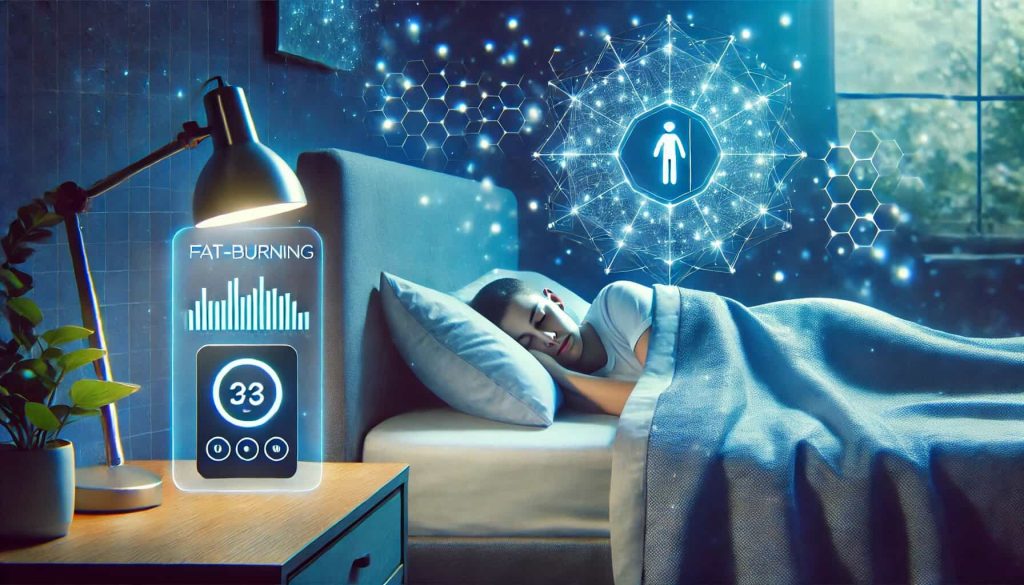
How to optimize your sleep for maximum weight loss Sleep isn’t just rest—it’s one of your strongest allies in achieving effective weight loss and maintaining overall health. Surprisingly, the quality and quantity of your sleep directly influence your body’s metabolic rate, hormone regulation, and even fat storage. In this comprehensive guide, we’ll explore how optimizing your sleep patterns can significantly promote fat loss and support your fitness journey. Join our Online Workshops: Understanding the connection between sleep and weight loss Quality sleep is essential for sustainable fat loss because it directly affects your metabolism and hormone balance. Studies show that insufficient sleep disrupts the balance between two crucial hormones that regulate appetite—ghrelin and leptin. Ghrelin, the hunger hormone, increases appetite, whereas leptin signals fullness. Sleep deprivation elevates ghrelin and reduces leptin, leading to overeating, increased calorie intake, and eventual weight gain. Moreover, sleep plays a critical role in maintaining insulin sensitivity and regulating circadian rhythms, both of which significantly impact effective weight loss. Poor sleep disrupts the body’s natural circadian rhythm, leading to increased insulin resistance, heightened risk of Type 2 diabetes, and increased fat storage. Benefits of optimizing sleep for weight management Improving sleep quality enhances metabolic efficiency, allowing your body to burn more calories naturally. Proper sleep boosts metabolism, facilitates muscle growth, and supports cardiovascular health, creating an optimal environment for healthy weight management. Optimized sleep also promotes a balanced body composition, decreasing adipose tissue (fat) and preserving lean skeletal muscle mass. Additionally, adequate rest improves energy levels, enabling more effective workouts and enhanced performance during high-intensity interval training (HIIT), further supporting weight loss strategies. Sleep optimization techniques to support weight loss Improve Sleep Quality for Effective Fat Loss Creating an optimal sleep environment is the foundation of sleep optimization. Maintain your bedroom temperature at about 60-67°F (15-19°C), as cooler temperatures enhance sleep quality and boost calorie burn through activation of brown fat. Minimize exposure to blue or high-energy visible light from screens, as it disrupts melatonin production and circadian rhythms. Consistency is key. Going to bed and waking at the same time daily helps regulate your internal clock, promoting deeper and more restorative sleep. Consider wearable devices to track your sleep patterns and make informed decisions about improving sleep habits. Biohacking Strategies to Enhance Metabolism Through Sleep Biohacking for weight loss includes innovative techniques like cold exposure, which significantly impacts metabolism. Cold showers, ice baths, or whole-body cryotherapy expose your body to extremely cold temperatures, stimulating brown adipose tissue activity. Brown fat is metabolically active tissue that increases calorie burn and aids in sustainable fat loss. Cryotherapy sessions have been shown to accelerate metabolism, reduce inflammation, and improve overall body composition by activating metabolic processes that help burn fat more efficiently. Dietary Approaches for Optimal Sleep and Weight Loss Diet significantly affects sleep quality. Incorporating healthy fats, such as avocados, nuts, and omega-3-rich foods, along with complex carbohydrates like sweet potatoes and quinoa, supports better sleep by stabilizing blood sugar and improving nutrient absorption. Foods rich in leucine, an amino acid critical for muscle growth and metabolic regulation, further enhance sleep quality and metabolism. Avoid large meals, alcohol, and caffeine close to bedtime, as these disrupt digestion, elevate body temperature, and interfere with restful sleep. Supplements such as magnesium, probiotics, and melatonin can also support quality sleep and enhanced metabolic efficiency. Exercise and Physical Fitness as a Catalyst for Better Sleep and Weight Loss Regular physical activity, particularly high-intensity interval training (HIIT), has profound effects on sleep quality and weight management. HIIT workouts increase calorie burn, improve insulin sensitivity, and stimulate fat loss. Exercising at optimal times—typically early morning or late afternoon—supports natural circadian rhythms and promotes deeper sleep cycles. Balancing rigorous exercise routines with adequate recovery practices such as stretching, yoga, or meditation effectively manages cortisol levels, reduces stress, and further promotes restful sleep and sustainable weight loss. Managing Stress to Enhance Sleep and Weight Loss Results Stress management is essential to achieving effective weight loss. Chronic stress activates the hypothalamic-pituitary-adrenal axis (HPA axis), elevating cortisol levels. High cortisol disrupts sleep patterns and contributes to increased fat storage, particularly abdominal fat. Implement relaxation techniques such as mindfulness meditation, deep breathing exercises, or guided imagery before bedtime to lower stress hormones and enhance sleep quality. Regular stress management practices ensure better metabolic regulation, optimal hormone balance, and consistent weight loss results. Leveraging Intermittent Fasting to Improve Sleep and Weight Management Intermittent fasting (IF) is a biohacking strategy that complements sleep optimization effectively. IF promotes insulin sensitivity, stabilizes blood sugar levels, and positively impacts sleep quality by aligning eating patterns with natural circadian rhythms. Research indicates that intermittent fasting reduces inflammation, improves body composition, and supports sustainable weight loss. Start by gradually adjusting your eating window and avoid late-night eating to maximize sleep benefits and accelerate metabolism. Practical biohacking tips to incorporate into your daily routine Adopting simple biohacks, such as cold showers, intermittent fasting, and mindfulness meditation, significantly enhances sleep quality and promotes fat loss. Experiment with different strategies to identify which practices best align with your body’s natural responses. Use wearable technology to track your progress and continuously refine your sleep optimization practices. Don’t underastimate the power of sleep for weight loss Optimizing your sleep is a vital element in any successful weight loss strategy. By combining quality sleep with proper diet, regular exercise, stress management, and biohacking techniques, you set the stage for sustainable, effective weight loss. Prioritize restful sleep as part of your comprehensive approach to achieving optimal health, improved body composition, and long-lasting weight loss result FAQ Subscribe to the FOREVEROLIMUS Newsletter Sign up to join 500,000+ other subscribers and receive regular emails on neuroscience, health and science-related topics.
The science behind biohacking weight loss: A comprehensive exploration
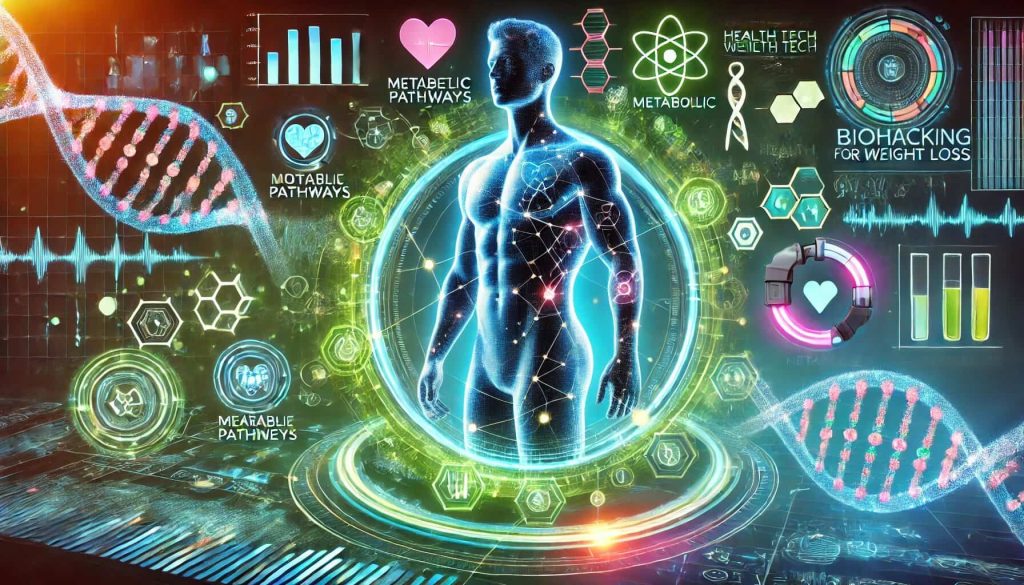
The science behind biohacking weight loss: A comprehensive exploration In an era where health and fitness trends evolve at breakneck speed, biohacking has emerged as a cutting-edge approach to optimize the human body. From wearable trackers that monitor sleep cycles to genetic testing that personalizes diet plans, biohacking attempts to use science, technology, and behavioral psychology to enhance overall well-being. One area where biohacking has garnered considerable attention is weight loss. This article delves into the physiological and psychological mechanisms behind biohacking weight loss, citing research, expert opinions, and the latest developments in the field. By the time you finish reading, you’ll have a solid understanding of how biohacking can help accelerate fat loss, improve metabolic health, and maintain lean muscle—potentially transforming the way you approach weight management. Join our Online Workshops: What is biohacking? At its core, biohacking is the practice of making incremental lifestyle and dietary changes to improve one’s overall health. The concept ranges from simple interventions (such as improving sleep hygiene) to more advanced, tech-driven methods (like continuous glucose monitoring). In the context of weight loss, biohacking focuses on regulating hormonal balance, optimizing metabolism, leveraging technology for data-driven insights, and cultivating healthy, long-term habits. Biohacking has been popularized by fitness enthusiasts like Dave Asprey, Ben Greenfield, and Dr. Peter Attia, each of whom shares experiences and research on topics such as intermittent fasting, nutrient timing, and high-intensity training. Their collective body of work underscores the notion that weight management requires a holistic approach—one that addresses physiological (e.g., hormones, insulin sensitivity) and psychological (e.g., motivation, habit formation) factors. The obesity pandemic Before diving into the science of biohacking weight loss, it’s crucial to understand why weight management has become a public health priority. According to the World Health Organization (WHO), obesity rates have nearly tripled worldwide since 1975. In 2016, more than 1.9 billion adults were overweight, of which over 650 million were classified as obese. Such staggering statistics underscore the need for effective weight-loss strategies that go beyond traditional “eat less and exercise more” paradigms. Researchers at the Centers for Disease Control and Prevention (CDC) have linked excess body fat with an elevated risk of heart disease, type 2 diabetes, certain cancers, and a host of other metabolic disorders. Meanwhile, modern lifestyles—replete with sedentary jobs, processed foods, and chronic stress—further exacerbate these challenges. Biohacking methods aim to counteract these influences by leveraging cutting-edge research and technology to create tailored, data-driven solutions. The psychological mechanisms of weight loss Hormonal Regulation Hormones play a pivotal role in body weight management. Key hormones such as leptin, ghrelin, insulin, and cortisol interact in complex ways to regulate appetite, satiety, and fat storage. Leptin: Produced by adipose tissue (body fat), leptin signals to the hypothalamus that the body has enough stored energy. When leptin levels are high, appetite typically decreases. However, in obesity, leptin resistance can develop, leading to persistent feelings of hunger. Ghrelin: Known as the “hunger hormone,” ghrelin stimulates appetite and is secreted primarily by the stomach. It surges before meals and drops afterwards, influencing how quickly we feel hungry again. Insulin: This hormone regulates blood glucose levels. Chronic high insulin levels, often triggered by diets rich in processed carbohydrates and sugar, can result in insulin resistance—a precursor to weight gain and type 2 diabetes. Cortisol: High stress levels elevate cortisol, which can promote fat storage, particularly around the abdomen (visceral fat). Chronic stress is often correlated with obesity and metabolic syndrome. Biohacking approaches frequently focus on rebalancing these hormones through targeted nutrition plans, stress management, and circadian rhythm optimization (more on this later). Metabolic Flexibility Metabolic flexibility refers to the body’s ability to switch between various fuel sources, such as glucose (derived from carbohydrates) and ketone bodies (derived from fat). When metabolic flexibility is high, the body can efficiently burn stored fat for energy, which is ideal for weight loss. Intermittent fasting and ketogenic diets are popular biohacking tools precisely because they can train the body to become more metabolically flexible. A 2018 study published in the Cell Metabolism journal indicated that intermittent fasting can help improve insulin sensitivity and support weight loss by allowing insulin levels to drop for extended periods, thereby promoting fat breakdown. Dr. Rhonda Patrick and Dr. Satchin Panda have both extensively researched the time-restricted feeding model, revealing its benefits for metabolic health and weight control. Gut Microbiome and Weight Regulation The human gut is home to trillions of microorganisms collectively known as the gut microbiome. These microbes help digest food, produce vitamins, and regulate inflammation. Research in the Nature journal points out that imbalances in gut microbiota (dysbiosis) can contribute to weight gain by influencing nutrient absorption and metabolic processes. Biohacking techniques aiming to improve gut health typically include: Probiotics (beneficial bacteria found in yogurt, kefir, and supplements) Prebiotics (fibrous compounds that feed friendly bacteria, found in foods like onions, garlic, and bananas) Fermented Foods (kimchi, sauerkraut, kombucha) Combining these dietary elements can promote a healthier gut environment, which in turn may support more efficient weight regulation. Psychological components of biohacking weight loss Habit Formation and Behavioral Psychology Weight loss isn’t just about biology; behavioral psychology plays an equally important role. According to Charles Duhigg, author of The Power of Habit, small lifestyle changes, when repeated consistently, can yield significant long-term transformations. Techniques such as habit stacking (pairing a new habit with an existing one) and implementation intentions (planning a specific time and place to execute a habit) are often employed in biohacking protocols to encourage adherence. Mindful Eating A 2020 review in the International Journal of Obesity emphasized that mindful eating can reduce emotional eating and lead to better portion control. Biohackers often utilize tools like guided meditation apps, heart-rate variability (HRV) monitors, and even journaling apps to cultivate mindfulness around food choices. By paying closer attention to hunger and satiety cues, individuals can avoid overeating and make more conscious food decisions. Stress Management Chronic stress disrupts hormonal balance (particularly cortisol) and can derail even the most sophisticated weight-loss plans. Biohacking
5 proven biohacking techniques for rapid weight loss
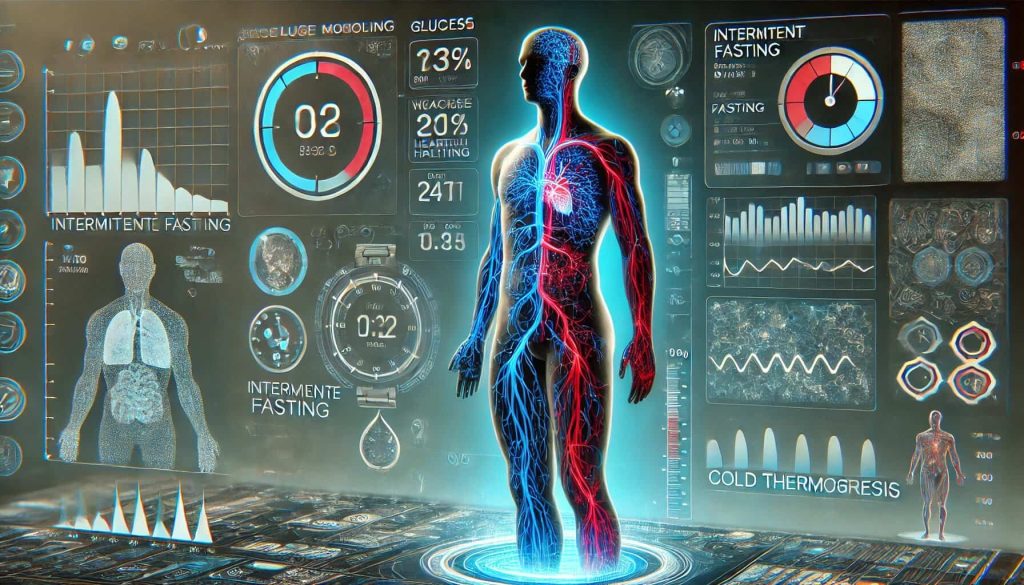
5 proven biohacking techniques for rapid weight loss In today’s fast-paced world, many people are seeking efficient and sustainable ways to lose weight. Traditional diet and exercise programs can be effective, but often take a one-size-fits-all approach that doesn’t account for individual metabolic differences, lifestyles, or personal preferences. That’s where biohacking comes into play. Biohacking, at its core, is about optimizing your body and mind using data-driven strategies and scientific insights to achieve better health outcomes. By zeroing in on the most impactful levers—such as diet, sleep, stress, and hormone regulation—you can supercharge your weight loss efforts and see real results, faster. In this comprehensive guide, we’ll explore 5 proven biohacking techniques for rapid weight loss, focusing on their scientific basis, actionable tips, and how to integrate them into your daily routine. We’ll also incorporate relevant statistics and cutting-edge information from well-regarded sources in the field of health and wellness. By the end of this article, you’ll have a clear roadmap to start your own biohacking journey, equipped with the knowledge to maximize fat burning and improve overall metabolic health. Join our Online Workshops: Intermittent fasting: Unlock your metabolic flexibility Why It WorksIntermittent fasting (IF) is one of the most popular biohacking methods for weight loss—and for good reason. This eating pattern involves cycling between periods of eating and fasting, effectively training the body to become metabolically flexible. Instead of constantly burning glucose for energy, IF encourages the body to tap into fat stores, promoting more efficient fat burning. Several studies have highlighted IF’s potential for rapid weight loss, with research showing that IF can lead to a reduction in body weight of 3-8% over 3 to 24 weeks. This is often attributed to lower insulin levels and improved insulin sensitivity, which help regulate fat storage in the body. Many people also report less hunger and find IF easier to adhere to than traditional calorie-restriction diets because it aligns with natural hunger rhythms, rather than imposing ongoing restrictions on every meal. How to Implement It 16:8 Method: Fast for 16 hours a day and limit your eating window to 8 hours. For instance, if you finish dinner by 8 PM, you skip breakfast and have your first meal at noon the next day. 5:2 Diet: Eat normally for five days a week, then reduce your calorie intake to around 500-600 calories for two non-consecutive days. 24-Hour Fast: Once or twice a week, choose a 24-hour period (e.g., from dinner to dinner) where you consume only water, tea, black coffee, or zero-calorie beverages. Key Tips Stay hydrated by drinking water, herbal teas, or black coffee to suppress hunger. Break your fast with nutrient-dense foods—think protein, healthy fats, and complex carbohydrates—to avoid blood sugar spikes. Monitor your biomarkers, such as glucose and insulin levels, to ensure your metabolism stays optimized. Devices that measure glucose or ketones can provide direct feedback on your metabolic state. Sleep optimization: Harness the power of circadian rhythm Why It WorksSleep is a cornerstone of health that often goes overlooked in weight loss discussions. Lack of sleep disrupts hormones like leptin (responsible for satiety) and ghrelin (which stimulates hunger), causing increased cravings and overeating. According to research, people who sleep fewer than six hours a night are 30% more likely to become obese compared to those who get seven to nine hours of quality sleep. From a biohacking perspective, sleep optimization involves aligning your lifestyle with your natural circadian rhythm. This internal clock influences many physiological processes, including hormone release, digestion, and cellular repair. When your sleep is optimized, you wake up energized, and your body efficiently burns fat throughout the day. How to Implement It Consistent Bedtime: Go to sleep and wake up at the same time every day, even on weekends. This helps regulate your circadian rhythm. Reduce Blue Light Exposure: Blue light from screens (phones, laptops, TVs) inhibits melatonin production. Use blue light-blocking glasses or limit screen time before bed. Create a Sleep Sanctuary: Make your bedroom cool, dark, and quiet. Consider investing in blackout curtains or a white noise machine for an optimal sleep environment. Track Your Sleep Quality: Devices and apps can measure sleep metrics (deep sleep, REM cycles, restlessness). Use this data to fine-tune your pre-bed routine. Key Tips Prioritize 7-9 hours of restful, uninterrupted sleep each night. Manage stress before bed with mindfulness, light stretching, or a calming routine—this will help keep cortisol levels in check. Avoid caffeine late in the day and large meals close to bedtime to reduce sleep disturbances. Stress reduction: Balance cortisol for optimal fat burning Why It WorksStress isn’t just a mental hurdle—it’s a biochemical one. Chronic stress increases levels of cortisol, the body’s main stress hormone, which can lead to higher insulin levels, reduced insulin sensitivity, and increased fat storage (particularly around the abdomen). Over time, heightened cortisol also disrupts other hormone levels, such as thyroid hormones, slowing down metabolic processes essential for weight loss. Research underscores the role of stress in weight gain, linking it to emotional eating, lower motivation for exercise, and reduced adherence to healthy dietary habits. Biohacking stress means consciously modifying your environment, daily habits, and mindset to maintain a more balanced hormonal profile. How to Implement It Mindfulness and Meditation: Even a short 10-minute meditation session can significantly lower cortisol levels and improve emotional regulation. Breathwork Techniques: Practices like box breathing (inhale for 4 seconds, hold for 4, exhale for 4, hold for 4) can instantly calm the nervous system. Consistent Exercise: Engaging in moderate physical activity (e.g., brisk walking, yoga, or dancing) helps metabolize excess cortisol and releases endorphins. Supportive Social Circles: Surround yourself with positive people. Social support is a proven way to reduce stress and maintain a more balanced, health-focused lifestyle. Key Tips Combine stress management with a healthy diet to boost fat loss; calming the body can aid digestion and better nutrient absorption. Track your heart rate variability (HRV) as a biofeedback tool. Higher HRV usually indicates lower stress levels and better recovery. Incorporate adaptogenic
Biohacking gifts – surprise your favorite biohacker!
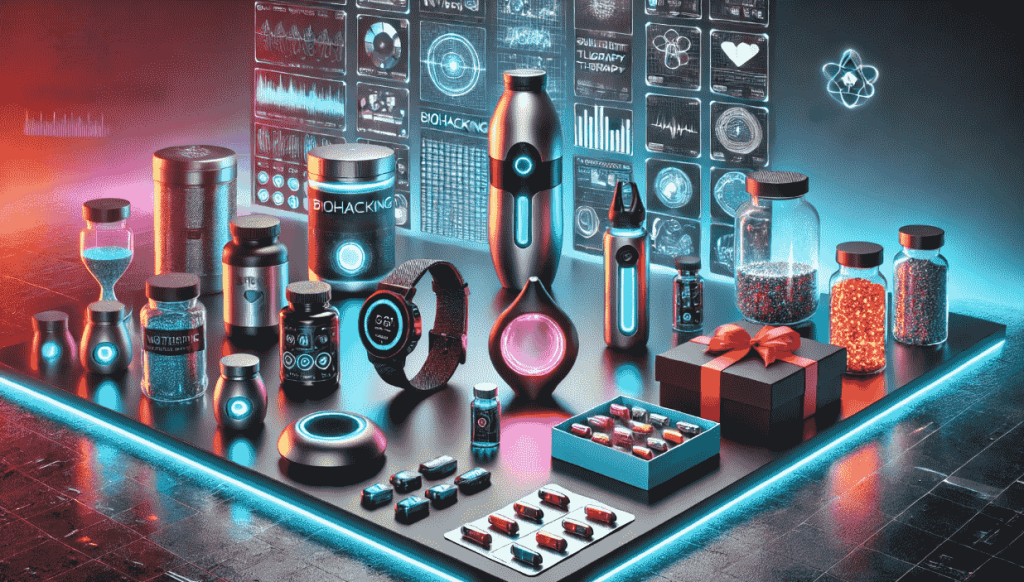
Biohacking gifts – surprise your favorite biohacker! More and more people are taking control of their health through biohacking—a movement that combines science, technology, and personal experimentation to optimize performance, improve sleep, boost energy, and enhance longevity. Whether you’re shopping for a seasoned biohacker or someone curious about upgrading their wellness routine, biohacking gifts offer a unique way to support their goals. From blue light-blocking glasses to infrared sauna blankets, this guide dives into the top picks for 2024—including festive biohacking Christmas gifts—backed by stats, trends, and expert insights. Join our Online Workshops: What is biohacking? Biohacking is a broad term that encompasses various techniques and tools aimed at enhancing the body’s performance. It involves everything from tracking biomarkers such as heart rate and sleep patterns to using high-tech devices like red light and infrared therapy systems. The movement even includes Do-it-yourself biology, where enthusiasts experiment with nutritional supplements, vitamins, herbs, and cutting-edge technology to reduce toxins and optimize overall health. The term “biohacking” might sound intimidating, but it’s simply about taking small, informed steps to improve your health. Many biohackers rely on data and technology—think wearable devices that monitor stress (biology) or whole-body vibration machines—to fine-tune their daily routines. The goal is to achieve better sleep, enhanced energy, and even improved longevity. Recent statistics indicate a growing trend, with a significant number of adults integrating biohacking practices into their wellness routines as a proactive approach to health. Why biohacking gifts are the futre of welness? Biohacking isn’t just a buzzword; it’s a $25.4 billion market (Grand View Research, 2023) driven by people seeking control over their biology. By 2025, experts predict biohacking tools will become household staples, with 40% of adults using wearables to track biomarkers like heart rate, sleep patterns, and stress levels. Gifts in this category aren’t just thoughtful—they’re investments in longevity, performance, and resilience. Consider this: 72% of biohackers prioritize sleep optimization, and 68% use tech to reduce exposure to toxins or electromagnetic fields (Biohacking Congress Survey, 2023). With trends like red light therapy and cryotherapy going mainstream, these gifts blend innovation with practicality. Top biohacking gifts to optimize sleep Poor sleep costs the U.S. economy $411 billion annually (Rand Corporation), making sleep-centric biohacks a game-changer. Blue light-blocking glasses Why they work: Blue light from screens disrupts melatonin production, delaying sleep by 1.5 hours on average (Harvard Health). Brands like Swanwick offer stylish options that block 99% of blue light. Perfect for: Office workers, late-night readers. Smart sleep masks Features: Look for masks with built-in sound therapy (e.g., white noise) and temperature control. The Manta Sound Sleep Mask uses Bluetooth and cooling gel inserts for deeper rest. Red light therapy panels Science-backed: A 2022 study in Sleep Medicine found red light (660nm) boosts melatonin by 76%. Portable devices like Joovv Go 2.0 are ideal for bedtime routines. ChiliPad cooling mattress topper Innovation: Regulates bed temperature to 55–110°F, aligning with the body’s natural drop in core temp for sleep onset. Tech gadgets every biohacker needs Tech is the backbone of biohacking, offering data-driven insights and targeted therapies. Wearables for biomarker tracking Whoop 4.0: Tracks heart rate variability (HRV), sleep stages, and recovery. Used by pro athletes to optimize training. Oura Ring: Monitors body temperature and resting heart rate, with a 92% accuracy rate in predicting illness (UC San Francisco Study). Infrared sauna blankets Detox + longevity: HigherDose’s blanket uses infrared waves to penetrate tissues, increasing blood flow and reducing cortisol by 37% (NIH). Whole-body vibration plates Fitness hack: 10 minutes on a plate like LifePro Waver equals 60 minutes of traditional exercise, per a 2023 Journal of Sports Science report. EMF protection devices Defense against radiation: Somavedic neutralizes electromagnetic fields from Wi-Fi and 5G, linked to cellular stress (BioInitiative Report). Recovery and longevity biohacks Biohackers live by the mantra: “Recover harder than you train.” Cold plunge tubs Benefits: Cryotherapy reduces muscle inflammation by 30% and boosts dopamine by 250% (University of New Hampshire). The Plunge tub offers temps as low as 39°F. PEMF therapy mats Pain relief: Pulsed electromagnetic fields stimulate cellular repair. BEMER Pro improves circulation by 29% in 8 minutes. Nootropic stacks Brain boost: Blends like Qualia Mind (used by Dave Asprey) enhance focus with lion’s mane and rhodiola. Affordable biohacking gifts under $50 Wellness doesn’t have to break the bank. Red light therapy keychains: Devices like Luminance RED target acne or joint pain for $49. Adaptogenic herb blends: Moon Juice’s Sex Dust (with schisandra and shatavari) balances hormones. Acupressure mats: The ProsourceFit Mat triggers endorphins, easing back pain in 20 minutes. DIY biohacking gifts for the hands-on enthusiasts Personalized gifts show extra effort: DIY blue light filter kit: Include amber LED bulbs and screen protectors. Toxin-free bathroom products: Make coffee scrubs (exfoliates + caffeine reduces cellulite). Biohacking Christmas gifts: Festive and functional Combine holiday cheer with cutting-edge science: Biohacking bundles: Pair a sauna blanket with a Therabody massage gun. Custom apparel: A “Biohacker in Training” T-shirt or a hoodie with circadian rhythm graphics. Gift cards: Let them choose from brands like Bulletproof or Dave Asprey’s blog. Future trends: What’s coming in 2025 AI-driven health optimization: Apps that analyze biomarkers to customize supplement plans. At-home hormone tests: Companies like Everlywell will expand into cortisol and testosterone kits. Smart beds with biofeedback: Sleep Number’s 360 iLE adjusts firmness based on real-time heart rate data. How to choose the right biohacking gift? Choosing the perfect biohacking gift depends on several factors: Personal Health Goals: Consider what the recipient is aiming to achieve—whether it’s better sleep, increased energy, or improved longevity. For instance, if the focus is on reducing stress (biology) and optimizing recovery, a massage device or an EMF shield might be ideal. Tech Features and Data Tracking: For the biohacker who loves data, look for devices that offer comprehensive monitoring, such as wearable tech or smart saunas that provide detailed analytics on heart rate, sleep, and stress levels. Usability and Ease of Integration: The gift should be user-friendly and easily incorporated into daily routines. Products